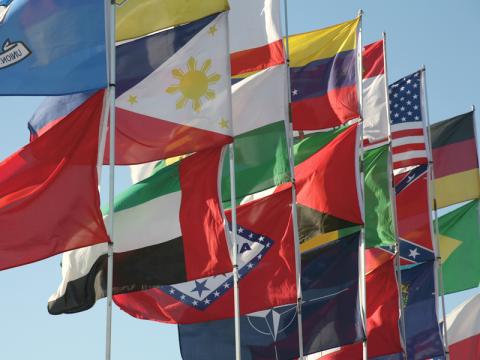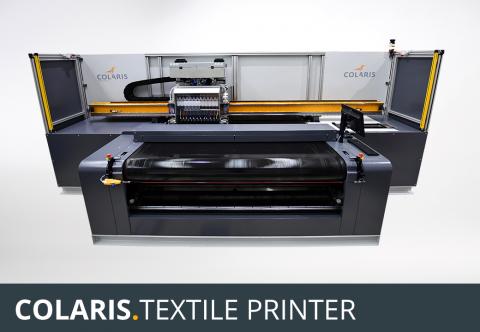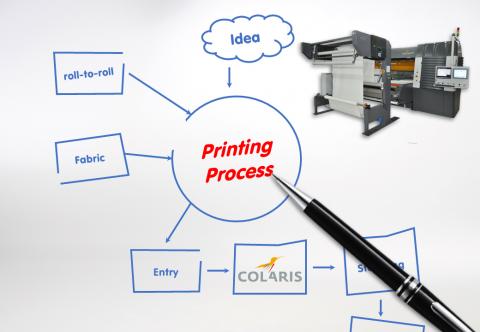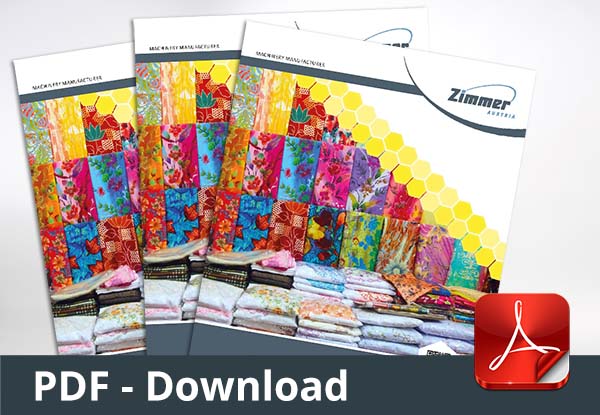Graphics / Flags & Banners
Basics
- “Flags and Banners” is a synonym for advertisement products for indoor or outdoor use.
- The materials are mostly made from PES or PA (Nylon) fibre.
- PES or PA (Nylon) fabric has many advantages compared to printed film or PVC coated material.
- Lighter in construction, saves resources and energy during manufacturing
- Suitable for penetrated prints (flags)
- Light weight
- Solvent-free
- Foldable without stress whitening (breaking of the image)
- Easy shipment to the customer
- Fabric can easily be recycled after its use
- Promotion articles are made from woven or knitted flag fabrics, canvas, sateen, deco, front-light, backlight, nonwoven, fleece and other material.
- These products are typically used for exhibition, booth or shop decoration, event management, community or institutional identification, and many more.
- On flying advertisement material (flags), penetration is most important: Identical image on frontside and backside, at light and dark colors, is essential.
Outdoor use demands high weathering fastness, achieved best with high-energy direct disperse inks.
Printing Methods
Printing on PES fabrics
- PES fabrics are printed with 100 % water based, ecological, disperse digital inks.
- PES fabrics are most popular in Europe, the Middle East and Asia. They are printed with disperse or sublimation inks.
- Nowadays even the US and Canadian markets demand for more PES direct-to-fabric printing.
Printing on PA (Nylon) fabrics
- In the USA and in Canada printing on PA fabrics is still quite common.
- Governmental institutions incl. Army, Air Force and Navy as well as many NGO’s still prefer the highly durable PA fabric, especially for national and institutional flags.
- PA fabrics require acid inks, which are 100 % water based.
Printing Process
- Inkjet pre-treatment for the fabric
- Printing with COLARIS
- Ink fixation process
- Washing process of the fabric for highest ink fastness properties
Printing of PES fabrics
- Fabric must be prepared for digital inkjet printing – mostly by a padding process on a stenter
- Printing with COLARIS, using direct disperse or direct sublimation inks
- Post-print drying - inline right after printing
Offline Process
- HT steam fixation in a loop steamer for 8 to 10 minutes
- Reductive washing and vacuum extraction for high light and weather fastness
Options
Printing of PA (Nylon) fabrics
- The fabric must be prepared for digital inkjet printing – mostly by a padding process on a stenter
- Printing with COLARIS, using water based acid inks
- Post-print drying - inline right after printing
Offline Process
- Fixation with saturated steam at 102°C / 216°F in a loop steamer for 30 minutes
- Washing and vacuum extraction
Options
- Inline inkjet pre-treatment, applied by the CHROMOJET digital pre-coating unit
- Batch job ink fixation (discontinuous process) by pressurized steam at 130°C / 266°F for 45 minutes, for maximum color yield and best possible penetration.
- Penetration enhancement with SUPRAPRESS
- Inline fixation for about 6 to 8 minutes
Pigment printing
- Printing is possible on any kind of substrate
- Good penetration can hardly be achieved – not really suitable for flag printing
- Fixation is easy: only hot air curing is required
Printing machines
The printing machine must offer working widths of 2,600 or 3,200 mm to process the dimensions of these products.
Mostly, four and five color setups are used. Up to eight color setups are available for special products.
- For high-volume print production we recommend COLARIS.PRINTERS with FUJIFILM Dimatix StarFire™ print heads.
- The ReadyJet™ ink circulation system guarantees sufficient ink availability at any working condition.
- The ink circulation system prevents the sedimentation of solid ink particles.
- An integrated workflow from design through printing, automatic cutting and confection is important for a flexible and economical production.
- COLARIS.PRINTERS printers with “stroke-by-stroke” design management allow the printing of large format images.
- “Design Nesting Function” is recommended to achieve limited material waste.
- Our open ink system allows the creation of spot colors for special needs.
Get more information in our PDF's:



